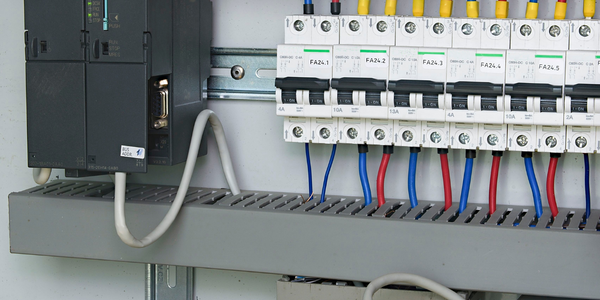Customer Company Size
Large Corporate
Region
- America
Country
- United States
Product
- JDA Demand Manager
- JDA Supply Chain Planner
- JDA Order Promiser
- JDA Enterprise Architecture
Tech Stack
- Supply Chain Management Software
Implementation Scale
- Enterprise-wide Deployment
Impact Metrics
- Customer Satisfaction
- Productivity Improvements
Technology Category
- Functional Applications - Enterprise Resource Planning Systems (ERP)
Applicable Industries
- Electronics
Applicable Functions
- Logistics & Transportation
- Procurement
Use Cases
- Inventory Management
- Supply Chain Visibility
Services
- Software Design & Engineering Services
- System Integration
About The Customer
Altera Corporation is a pioneer and leader in the field of programmable logic solutions. The company enables system and semiconductor companies to rapidly and cost-effectively innovate, differentiate and win in their markets. Altera delivers solutions and services to more than 12,000 customers worldwide, with annual revenues of $1.9 billion. The company's customers range from global market-leading original equipment manufacturers (OEMs) to local hobbyists. Altera sells products that are low-volume/high-cost and products that are high-volume/low-cost — and every product type in between.
The Challenge
Altera Corporation, a pioneer and leader in programmable logic solutions, serves more than 12,000 customers worldwide, with annual revenues of $1.9 billion. However, recent market changes and organizational growth over the past decade prompted Altera to reevaluate its supply chain strategy. Adapting to external changes like new government regulations and industry consolidation, as well as managing more complex products and various distribution channels, were impacting the company’s supply chain. The company recognized that change is the new norm, and therefore, it needed to be continuously evolving in order to ensure supply continuity and velocity. Altera increased external and internal forecast collaboration, and invested in business process improvement and integrated planning systems to accelerate the speed of information exchange.
The Solution
Altera adopted a segmentation strategy, enabled by JDA’s Manufacturing Planning solution, to tailor its supply chain model. The company leveraged JDA’s demand planning, master planning and order promising capabilities to successfully drive both customer and product segmentation. Altera developed unique forecasting techniques and safety-stock policies that are tailored to its different customer segments. For example, the company developed a collaborative process for its OEMs since they purchase in large volumes. For customers with a more stochastic demand profile, Altera implemented very different supply chain processes and rules. The company also segments its supply chain based on product type. Altera’s segmentation strategy is critical in balancing ambitious customer service targets with real-world resource constraints.
Operational Impact
Quantitative Benefit

Case Study missing?
Start adding your own!
Register with your work email and create a new case study profile for your business.
Related Case Studies.

Case Study
Remote Temperature Monitoring of Perishable Goods Saves Money
RMONI was facing temperature monitoring challenges in a cold chain business. A cold chain must be established and maintained to ensure goods have been properly refrigerated during every step of the process, making temperature monitoring a critical business function. Manual registration practice can be very costly, labor intensive and prone to mistakes.

Case Study
Predictive maintenance in Schneider Electric
Schneider Electric Le Vaudreuil factory in France is recognized by the World Economic Forum as one of the world’s top nine most advanced “lighthouse” sites, applying Fourth Industrial Revolution technologies at large scale. It was experiencing machine-health and unplanned downtime issues on a critical machine within their manufacturing process. They were looking for a solution that could easily leverage existing machine data feeds, be used by machine operators without requiring complex setup or extensive training, and with a fast return on investment.

Case Study
Cloud Solution for Energy Management Platform-Schneider Electric
Schneider Electric required a cloud solution for its energy management platform to manage high computational operations, which were essential for catering to client requirements. As the business involves storage and analysis of huge amounts of data, the company also needed a convenient and scalable storage solution to facilitate operations efficiently.

Case Study
Leveraging the IoT to Gain a Competitive Edge in International Competition
Many large manufacturers in and outside Japan are competing for larger market share in the same space, expecting a growing demand for projectors in the areas of entertainment, which requires glamor and strong visual performance as well as digital signage that can attract people’s attention. “It is becoming more and more difficult to differentiate ourselves with stand-alone hardware products,” says Kazuyuki Kitagawa, Director of Service & Support at Panasonic AVC Networks. “In order for Panasonic to grow market share and overall business, it is essential for us to develop solutions that deliver significant added value.” Panasonic believes projection failure and quality deterioration should never happen. This is what and has driven them to make their projectors IoT-enabled. More specifically, Panasonic has developed a system that collects data from projectors, visualizes detailed operational statuses, and predicts issues and address them before failure occurs. Their projectors are embedded with a variety of sensors that measure power supply, voltage, video input/ output signals, intake/exhaust air temperatures, cooling fan operations, and light bulb operating time. These sensors have been used to make the projector more intelligent, automatically suspending operation when the temperature rises excessively, and automatically switching light bulbs. Although this was a great first step, Panasonic projectors were still not equipped with any capability to send the data over a network.









